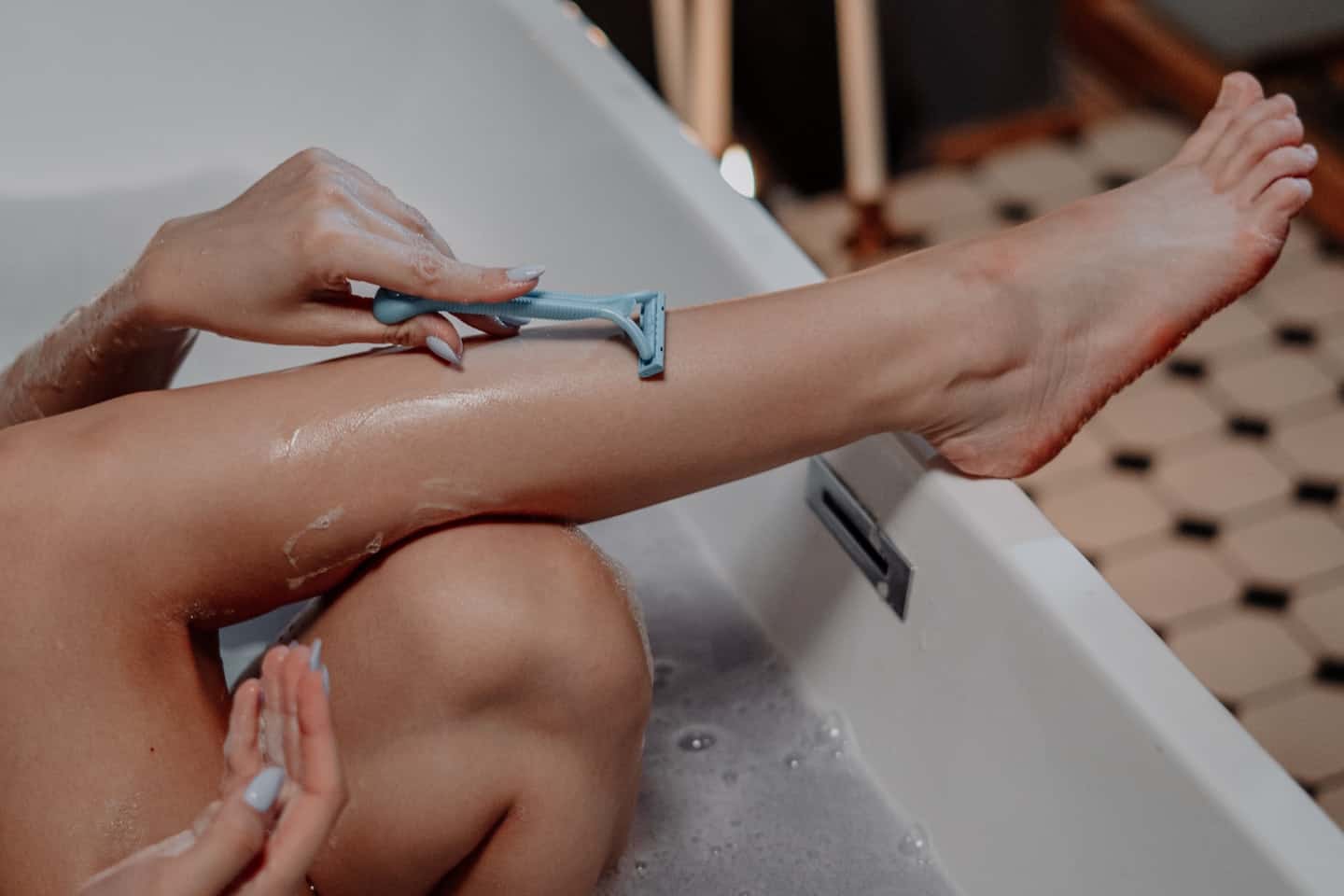Think quick: What beauty routine do you spend the most time on, completing almost every day? Which grooming habit can make you feel instantly put together and poised? If you’re like most American women, the answer to both these questions is shaving. Over 99 percent of American women remove body hair, most commonly by shaving. We shave to feel smooth and sleek, but there can be an unintended—and counterproductive—side effect if we’re not careful: razor burn. This “burn” actually consists of that all-too-familiar series of small red bumps. Sometimes they itch or sting (hence the burn part of the name), but other times they just look unsightly. Here’s what you need to know about preventing razor burn and treating it when it happens.
What is razor burn?
Razor burn is caused when a razor blade pulls and twists one or more hair follicles, damaging your skin. In addition to the irritation it causes, razor burn can also cause a twisted hair to grow back under the skin, which is known as an ingrown hair. This is uncomfortable and can lead to more pesky red dots and even infection. You might have noticed that razor burn occurs more frequently in your armpits or on your bikini area. That’s because we have different types of body hair. The hair in our armpits and pubic areas—and on and men’s faces—is a thicker, coarser type known as terminal hair. Since terminal hair is tougher, it’s more likely to be pulled by a razor and to come back ingrown.
Preventing Razor Burn
The best way to avoid razor burn is to prevent it, and the most effective means of prevention is to use a sharp razor. If you’re shaving with a dull blade, it’s more likely to pull on your hair follicles, irritating your skin. Another way to prevent razor burn is by keeping your skin well-moisturized before, during, and after shaving. This means using plenty of shaving cream, or even switching from a shaving cream to a shaving oil, which can provide more lubrication. Whatever you use, make sure you’re reapplying often. Also, avoid going over the same area more than once in a session. After shaving, moisturize again.
Treating Razor Burn
You hop in the shower to quickly shave your armpits, only to feel that burning sensation later in the day. Maybe you didn’t use enough shaving cream or you had a dull blade. Whatever the reason, now you’ve got razor burn. What next? Luckily, there are plenty of treatment options. Try soothing the area with something cooling, like aloe vera gel (or better yet, aloe directly from a plant). To avoid having your hair follicles become infected, apply lemon juice to the area. Although it might sting if you have any small nicks, lemon juice is naturally antibacterial and can keep harmful bugs at bay. If the bumps are large or bothering you, try dousing them with a topical anti-inflammatory. Witch hazel is a great natural option: Just put some on a cotton ball and dab the area. For something a bit more powerful, apply a hydrocortisone cream, which can be purchased at any drug store. While you’re treating razor burn, it’s best not to shave the area since that can further irritate your skin. Practice patience and give your body time to heal!



